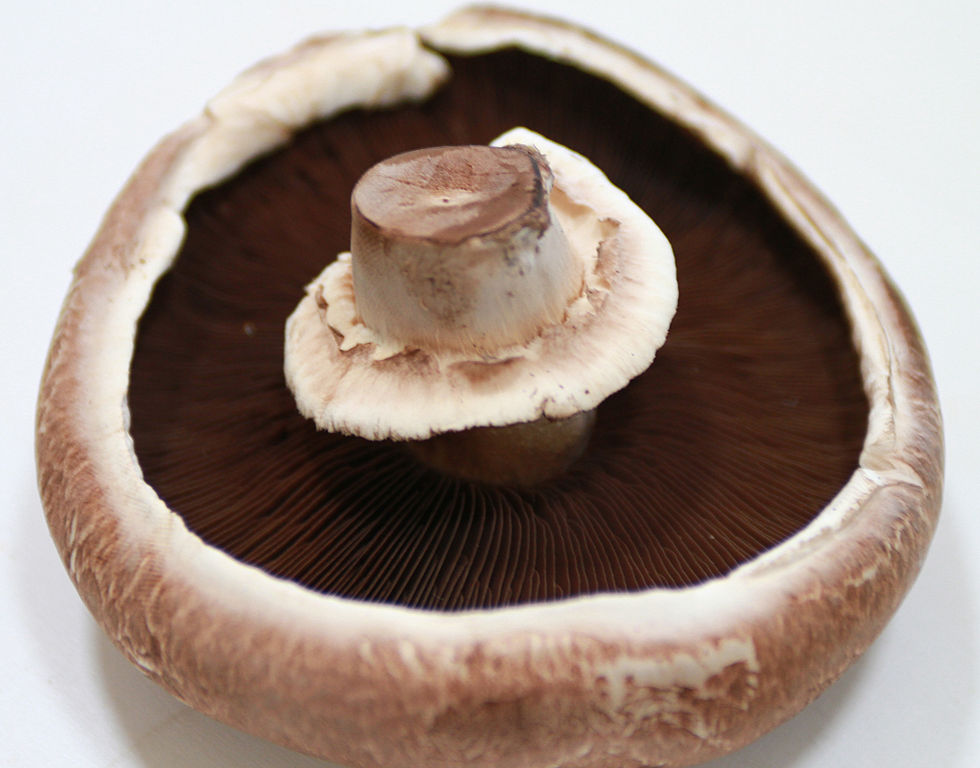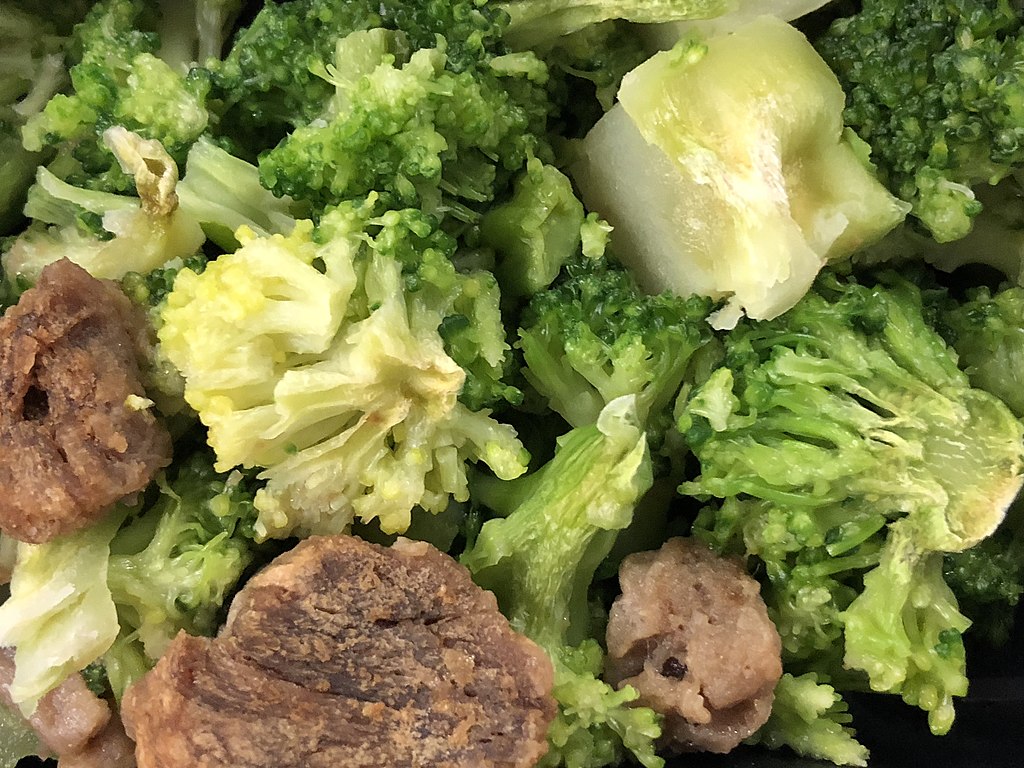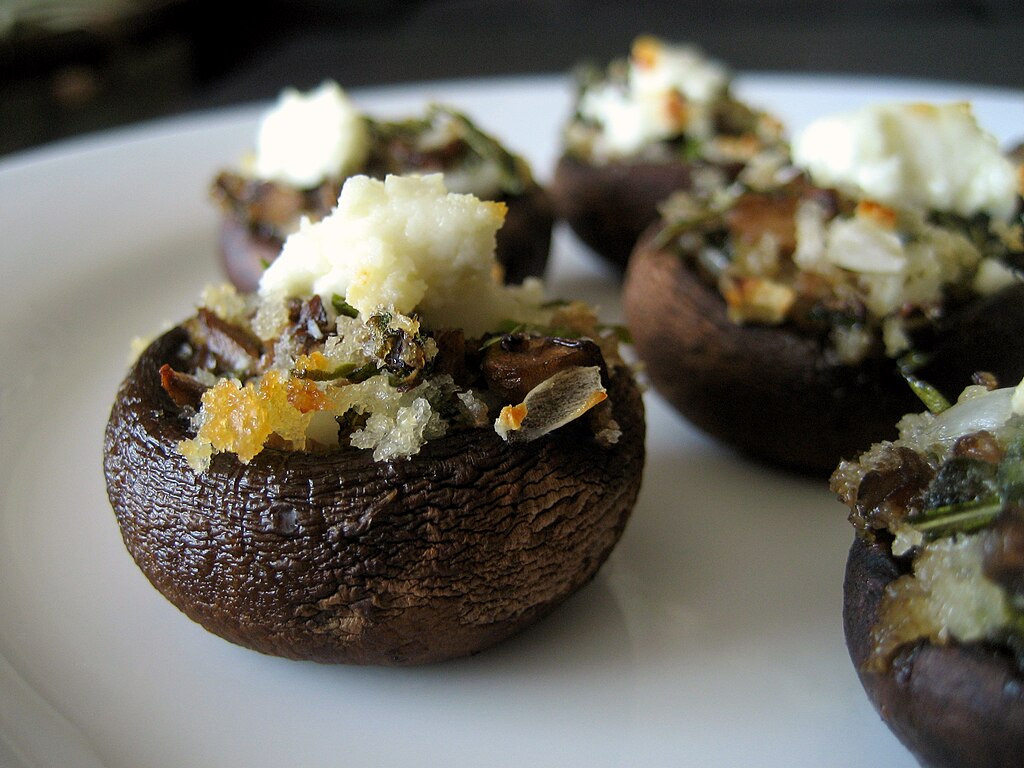In This Article Show
With their rich, meaty texture and deep flavor, they’ve found their way into countless dishes in my kitchen. And if you’re anything like me – someone who’s had to prepare quick, nutritious meals for a bustling family – you’ve likely pondered shortcuts or even culinary experiments.
One question that frequently emerges, especially when I’m pressed for time or seeking a fresher approach: can you eat portabella mushrooms raw?
These large, umbrella-like mushrooms have become a favorite for many, not just for their taste but also for their versatility. But diving into the world of raw consumption isn’t just about taste; it’s about understanding the health, safety, and culinary nuances.
So, if you’ve ever glanced at a portabella and wondered if it could skip the skillet and go straight to your salad or sandwich, you’re in the right place. Let’s begin.
Background on Portabella Mushrooms

Portabella mushrooms, known for their generous size and robust flavor, are a popular choice in many culinary traditions around the world. These capacious fungi, often spanning up to six inches in diameter, belong to the Agaricus bisporus species, making them close relatives of some other familiar faces in the mushroom family.
Distinguishing between the different members of this family might be a bit surprising to some. The portabella mushroom is essentially the mature version of the cremini mushroom, which in turn is the more mature variant of the white button mushroom.
Great deals to snatch for your little ones 🎉
As they grow and age, these mushrooms undergo a transformation, with portabellas being the final, fully-grown stage. This maturation process results in the deeper flavors and meatier texture that portabellas are celebrated for.
The name ‘portabella’ itself conjures images of sun-soaked Italian landscapes, though the mushroom is widely consumed globally. Its thick, dense cap and sturdy stem make it an excellent candidate for grilling, baking, and stuffing.
When cooked, portabellas release a savory umami flavor, often compared to certain meats, which makes them a popular choice among vegetarians and vegans as a meat substitute.
Yet, as familiar as many of us might be with the cooked delights of the portabella, the concept of consuming it raw remains a topic of curiosity. With its unique texture and inherent flavors, the raw portabella mushroom offers a different culinary experience, one that we’re about to dive deeper into.
The Nutritional Benefits of Portabella Mushrooms
Portabella mushrooms are not just a culinary delight; they’re also packed with an array of nutritional benefits that can contribute to a healthy diet. Whether you’re a seasoned chef, a curious foodie, or a mom like me who’s always on the lookout for nourishing ingredients, you’ll appreciate the wholesome goodness these fungi bring to the table.

1. Vitamins and Minerals
Portabella mushrooms are a good source of several essential vitamins and minerals. They are particularly rich in selenium, a powerful antioxidant that supports the immune system and can help prevent damage to cells and tissues. Additionally, they offer decent amounts of riboflavin (B2) and niacin (B3), which are crucial for energy production and cell maintenance.
2. Low in Calories, High in Flavor
One of the remarkable aspects of portabella mushrooms is their ability to deliver a hearty, satisfying taste with relatively few calories. This makes them an excellent choice for those monitoring their caloric intake or seeking filling yet low-calorie food options.
3. Dietary Fiber
These mushrooms contain a moderate amount of dietary fiber, essential for digestive health. Fiber aids in promoting regular bowel movements, preventing constipation, and supporting a healthy gut microbiome.
4. Natural Umami
The umami flavor, often associated with broths and meats, is also prevalent in portabella mushrooms. This savory taste can enhance the depth of various dishes, and from a nutritional standpoint, the umami compounds in mushrooms can help stimulate the feeling of satiety, helping you feel fuller for longer.
5. Plant-Based Protein
While not as protein-rich as animal sources or legumes, portabella mushrooms still offer a modest amount of plant-based protein, which can contribute to muscle health, especially in vegetarian or vegan diets.
6. Antioxidant Properties
Beyond selenium, portabellas also contain other antioxidants, such as ergothioneine, which can help protect the body from harmful free radicals. Antioxidants play a vital role in reducing the risk of chronic diseases and maintaining overall health.
Embracing portabella mushrooms in your culinary repertoire not only broadens your flavor palette but also introduces a plethora of health benefits. Whether enjoyed raw or cooked, their nutritional profile is undeniably impressive.
And for those days when I’m crafting a quick, healthy meal for the family, I often turn to these meaty mushrooms as a nutritious ingredient that never compromises on taste.
Safety Concerns With Raw Mushrooms
While portabella mushrooms offer a delightful taste and an array of health benefits, it’s essential to approach the idea of eating them raw with an informed perspective. Like many foods, consuming raw portabella mushrooms carries specific considerations and potential risks. Here’s what you should keep in mind:
1. Potential Bacterial Contamination
Just like any raw produce, mushrooms can harbor harmful bacteria. E. coli, Salmonella, and Listeria are among the potential contaminants that could reside on the surface of a mushroom. Proper washing and buying from reputable sources can help mitigate this risk, but it’s essential to remain aware.
2. Agaritine Content
One of the primary concerns with raw mushrooms, including portabellas, is the presence of a naturally occurring compound called agaritine. Some studies suggest that agaritine might have carcinogenic properties when consumed in very high amounts over extended periods.
However, it’s worth noting that the compound is heat-sensitive and reduces significantly when the mushrooms are cooked.
3. Digestive Concerns
For some individuals, eating raw mushrooms might be a bit harder on the digestive system, leading to mild discomfort, bloating, or gas. The cell walls of mushrooms are made of chitin, a substance that’s more challenging for humans to break down. Cooking can help soften these cell walls, making mushrooms easier to digest.
4. Allergies and Sensitivities
Though rare, some people might have allergies or sensitivities to compounds in mushrooms. If you’re trying raw portabella mushrooms for the first time, it’s wise to start with a small amount to gauge your body’s reaction.
5. Pesticide Residue
Depending on where and how they’re grown, portabella mushrooms might be exposed to pesticides. This concern isn’t exclusive to mushrooms but is a general consideration for all raw produce. Opting for organically grown mushrooms can reduce this risk.
6. Texture and Taste
From a purely sensory perspective, raw mushrooms have a different texture and flavor profile than their cooked counterparts. Some might find raw portabellas a bit too firm or earthy for their liking.
While these considerations don’t necessarily mean you should avoid raw portabella mushrooms, they emphasize the importance of being informed and cautious. By understanding potential concerns and taking necessary precautions, you can safely enjoy the unique taste and texture of raw portabellas.
As someone who’s prepared countless meals, being informed about the ingredients I use has always been paramount – ensuring both delightful flavors and peace of mind at the dinner table.
Culinary Uses of Raw vs. Cooked Portabella Mushrooms
Portabella mushrooms, with their rich flavor profile and versatile texture, seamlessly adapt to various culinary techniques. From raw salads to hearty grilled dishes, their application in the kitchen is diverse. Let’s delve into the delicious world of both raw and cooked portabella mushrooms and explore their culinary potential:
Raw Portabella Mushrooms
1. Salads
Thinly sliced raw portabella mushrooms can be a crisp addition to salads, pairing especially well with leafy greens, cherry tomatoes, olives, and a tangy vinaigrette. Their meaty texture offers a contrasting bite in a fresh salad mix.
2. Carpaccio
Drawing inspiration from the Italian dish typically made with thinly sliced raw meat, portabella carpaccio features paper-thin mushroom slices seasoned with olive oil, lemon juice, shaved parmesan, and fresh herbs. It’s a refreshing appetizer that showcases the natural flavors of the mushroom.
3. Wraps and Sandwiches
Raw portabella slices can add an earthy crunch to wraps and sandwiches. Think of a wrap filled with avocado, lettuce, carrots, and raw portabella strips, all drizzled with a zesty sauce.
4. Marinated Mushrooms
Marinating raw portabellas in a mixture of olive oil, vinegar, garlic, and herbs can transform their flavor profile. After a few hours, they soften slightly and absorb the marinade’s flavors, making for a delicious side or appetizer.
Cooked Portabella Mushrooms
5. Grilled Portabellas Mushrooms
Given their large size, portabella caps can be seasoned and grilled whole. Their natural umami-rich flavor intensifies upon grilling, and they often serve as a veggie burger alternative.
6. Stuffed Mushrooms
The sturdy texture of portabella caps makes them ideal for stuffing. Fillings can range from a mix of cheeses, breadcrumbs, and other veggies to more protein-rich options like seasoned tofu or meats.

7. Sautéed or Stir-Fried
Sliced portabellas can be quickly sautéed with garlic, onions, and other vegetables. Their absorbent nature means they readily take on flavors from sauces and seasonings, making them a favorite in stir-fry dishes.
8. Soups and Stews
The hearty texture of portabellas can enhance the depth and richness of various soups and stews. They can be diced and added to broths or creamy soups, offering a satisfying bite.
9. Baked Dishes
Think of dishes like mushroom risotto or portabella lasagna. When baked, these mushrooms release their moisture, mingling with other ingredients to create a harmonious and flavorful dish.
When it comes to portabella mushrooms, whether consumed raw or cooked, the possibilities are vast. It’s all about personal preference, the desired texture, and the flavor profile you’re aiming for. As a mom who’s whipped up myriad dishes for her family, I can attest to the versatility of portabellas – they’re culinary chameleons, ready to adapt and delight in any form.
Tips for Consuming Raw Portabella Mushrooms
Venturing into the realm of raw portabella mushrooms can be a delightful culinary experience, offering a fresh, earthy flavor profile and a crisp texture. However, to maximize their taste and ensure safety, it’s essential to keep some key tips in mind.
As someone who’s always hunting for smart kitchen hacks to keep my family meals both tasty and safe, I’ve compiled a list of recommendations for enjoying raw portabellas to their fullest:
1. Proper Cleaning
Portabella mushrooms tend to have a lot of crevices where dirt and small particles can hide. Ensure you clean them thoroughly. Using a damp paper towel or a soft brush, gently clean the cap and stem, removing any visible dirt.
2. Removing the Gills
The dark gills on the underside of the portabella cap can have a strong, sometimes overpowering flavor when consumed raw. For a milder taste, consider scraping off these gills with a spoon before slicing or serving the mushroom.
3. Slicing Techniques
For salads or carpaccio, slice the mushrooms as thinly as possible to achieve a tender texture. A mandolin slicer can be especially helpful for getting consistently thin slices.
4. Marination
To infuse raw portabellas with more flavor, consider marinating them for a few hours. Using ingredients like olive oil, balsamic vinegar, garlic, and fresh herbs can enhance their natural taste and slightly soften their texture.
5. Storage
If you’re not using the mushrooms immediately after purchasing, store them in the refrigerator in a paper bag. This method allows the mushrooms to breathe, preserving their freshness and preventing them from getting slimy.
6. Purchase from Reputable Sources
Ensure that you buy your portabella mushrooms from a reputable supplier or grocery store. This way, you’re more likely to get fresh, uncontaminated mushrooms.
7. Taste Combinations
Raw portabellas have a distinct flavor that pairs well with certain ingredients. Try combining them with tangy cheeses, like feta or goat cheese, fresh herbs, citrus juices, or nuts like almonds and walnuts to complement and elevate their natural taste.
8. Start Small
If you’re introducing raw portabella mushrooms to your diet for the first time, start with small quantities. This way, you can gauge how your body reacts and get accustomed to its unique flavor.
Exploring the world of raw portabella mushrooms can be an exciting culinary adventure. With the right preparation techniques and thoughtful pairing, you can unveil a whole new side of this beloved fungus. And as with any ingredient, the key lies in experimentation – so don’t be afraid to get creative and discover your favorite way to enjoy raw portabellas!












